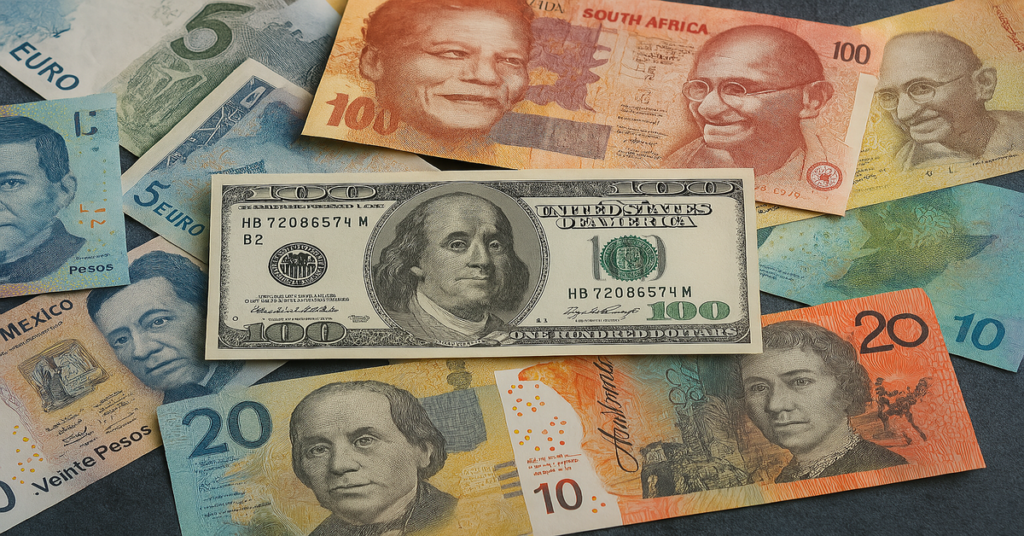Papel moneda, or paper money, is one of the most transformative inventions in human economic history. From ancient promissory notes to modern banknotes featuring cutting-edge security features, paper currency has played a central role in shaping trade, governance, national identity, and economic policy. While digital payment methods are increasingly popular, paper money remains a dominant form of transaction and a symbol of sovereignty in many countries.
This article explores the history, development, cultural significance, economic function, and future of paper money—offering a detailed, informative view of its journey from ancient markets to modern banks.
What is Papel Moneda?
Definition and Basics
Papel moneda refers to banknotes or currency notes issued by a central authority, usually a country’s central bank or government. Unlike coins, which have intrinsic value due to their metallic content, paper money’s value is representative—based on trust, government backing, and legal tender laws.
Banknotes are typically made of cotton-linen blend or polymer, and they serve several key functions:
- Facilitating trade and commerce
- Acting as a store of value
- Serving as a unit of account
- Representing national symbolism
Legal Tender
Legal tender laws compel individuals and institutions to accept paper money as a means of payment for debts and goods. The acceptance and enforcement of such laws give paper currency its legitimacy, regardless of the physical material it’s printed on.
The Historical Evolution of Paper Money
Origins in Ancient China
The earliest documented use of paper money can be traced back to Tang Dynasty China in the 7th century, with more widespread adoption during the Song Dynasty in the 11th century. Merchants initially used promissory notes called “jiaozi” due to the difficulty of transporting heavy copper coins over long distances.
Eventually, the Chinese government began issuing official banknotes, a revolutionary step that laid the foundation for modern paper currencies.
Introduction to the Islamic World and Europe
Paper money spread slowly outside of China. In the Islamic world, documents similar to promissory notes called “sakk” were used for financial transactions.
In Europe, the first significant issuance occurred in Sweden in the 1660s, followed by France and England. The Bank of England, established in 1694, became a key player in institutionalizing banknotes backed by gold reserves.
Expansion in the 18th–19th Centuries
During the Industrial Revolution, paper money gained traction globally. With increased trade, banking systems, and colonization, various countries began establishing central banks and issuing their own currency.
By the late 19th and early 20th centuries, paper currency was commonplace in most economies.
The Gold Standard and Fiat Currency
The Gold Standard Era
For much of the 19th and early 20th centuries, paper money was tied to the gold standard, meaning each note could be exchanged for a fixed amount of gold. This provided stability and trust in the value of currency.
However, this system had limitations during financial crises and wartime. During World War I and II, many countries temporarily abandoned the gold standard to finance military operations.
Emergence of Fiat Currency
Today, most countries operate under a fiat currency system, meaning paper money is not backed by physical commodities but by government decree. The value of fiat money is based on economic strength, trust in the issuing authority, and monetary policy.
The shift to fiat currency allowed central banks to manage economies more flexibly, especially through tools like interest rates and quantitative easing.
Papel Moneda and National Identity
Cultural Symbols
Banknotes often feature historical figures, cultural icons, monuments, wildlife, and art, representing a country’s heritage and values. Examples include:
- Nelson Mandela on South African Rand
- Frida Kahlo on proposed Mexican Peso designs
- Mahatma Gandhi on Indian Rupees
- Euro banknotes with symbolic bridges and arches
These visuals serve as daily reminders of a nation’s history, diversity, and aspirations.
Language and Typography
The design of paper money also incorporates national languages and scripts. Multilingual countries like Canada and Switzerland use multiple languages on their notes, symbolizing inclusivity and unity.
Security Features in Modern Paper Money
Counterfeit Prevention
To combat counterfeiting, modern banknotes are embedded with a variety of security features, such as:
- Watermarks
- Holograms
- Color-shifting inks
- Microprinting
- Security threads
- Ultraviolet features
These make replication difficult and ensure trust in the authenticity of money.
Polymer Banknotes
Some countries, including Australia, Canada, and the UK, have transitioned to polymer banknotes, which are more durable, waterproof, and harder to counterfeit. These notes also allow for more sophisticated security and environmental benefits through recyclability.
Papel Moneda and the Economy
Monetary Policy Tool
Paper money plays a central role in implementing monetary policy. By controlling the supply of money in circulation, central banks influence:
- Inflation rates
- Interest rates
- Consumer spending
- Investment levels
When the economy slows, governments may increase the money supply to encourage borrowing and spending. Conversely, reducing the supply can curb inflation.
Inflation and Hyperinflation
The trust-based nature of fiat currency makes it susceptible to inflation if not properly managed. Historical cases of hyperinflation, such as:
- Zimbabwe in the 2000s
- Weimar Germany in the 1920s
- Venezuela in recent years
…show how rapidly paper money can lose value if oversupplied or mismanaged.
Global Variations in Paper Money
Unique Designs Around the World
Paper currency designs vary significantly by country. Some use bright colors and vertical orientations (Switzerland), while others are more traditional. Themes may focus on:
- National independence
- Scientific achievement
- Natural wonders
- Revolutionary leaders
Each note tells a story, acting as a miniature canvas for national expression.
Multicurrency Economies
Some nations use the currencies of other countries, such as:
- Panama, which uses the U.S. Dollar
- Zimbabwe, which has used multiple foreign currencies
- Ecuador, officially dollarized since 2000
This reliance highlights issues with monetary sovereignty and trust in local governance.
Collecting Papel Moneda: Numismatics
Currency Collecting as a Hobby
Paper money is a popular collectible among numismatists. Collectors seek rare notes, historical currencies, misprints, and commemorative editions. Notable examples include:
- Confederate banknotes (U.S. Civil War era)
- Old European currencies pre-Euro
- Emergency money (Notgeld) from Germany during WWI
Currency collecting offers insights into political history, economics, and artistic trends.
Value Determinants
Collectors value banknotes based on:
- Rarity
- Condition
- Serial numbers
- Historical significance
Some rare notes can fetch thousands of dollars in auctions.
Papel Moneda vs. Digital Currency
Rise of Digital Payments
With the growth of credit cards, mobile wallets, and online banking, physical cash usage is declining in some regions. In countries like Sweden and China, digital transactions dominate.
Cryptocurrency and Central Bank Digital Currencies (CBDCs)
The rise of Bitcoin and blockchain technology has introduced new questions about the future of money. Central banks are responding by researching or launching CBDCs, which combine the control of fiat currency with the efficiency of digital assets.
However, unlike paper money, these currencies depend entirely on electronic infrastructure and may raise concerns about surveillance and accessibility.
Advantages and Disadvantages of Paper Money
Pros
- Physical presence: Tangible and widely accepted
- Anonymity: Doesn’t require identity verification
- No internet needed: Essential for unbanked populations
- Cultural relevance: Acts as a symbol of national identity
Cons
- Counterfeiting risk
- Physical wear and tear
- Limited traceability (problem for illegal use)
- Cost of printing and security
The Future of Papel Moneda
Will Paper Money Disappear?
While digital trends suggest a slow move away from cash, many experts argue that paper money will persist, especially for:
- Older adults
- Rural communities
- Crisis situations (e.g., during power outages)
Hybrid Systems
Future economies are likely to use a hybrid model, where paper currency, digital payments, and CBDCs coexist. The key will be accessibility, security, and public trust.
Environmental Considerations
Sustainability is also influencing future designs. Countries are moving toward recyclable polymer and eco-friendly ink, minimizing the carbon footprint of currency production.
Conclusion
Papel moneda has come a long way—from handwritten promissory notes in ancient China to high-tech polymer banknotes of the 21st century. It has served not only as a tool for economic exchange but also as a mirror of national identity, political evolution, and technological advancement.
In a world increasingly dominated by digital transactions, paper money remains a vital piece of the financial puzzle—offering stability, familiarity, and symbolic importance. Whether in the wallet of a vendor in a market, the vault of a central bank, or the hands of a child receiving their first allowance, paper money continues to shape lives and economies every day.
FAQs
1. What is papel moneda?
Papel moneda refers to paper currency or banknotes issued by a central bank or government as legal tender for economic transactions.
2. Who invented paper money?
The first documented use of paper money was in China during the Tang Dynasty, with official banknotes widely used during the Song Dynasty.
3. Is paper money still used globally?
Yes. Despite digital alternatives, paper money remains widely used, especially in cash-based economies and regions with limited digital infrastructure.
4. What is the difference between fiat currency and gold-backed currency?
Fiat currency is not backed by a physical commodity like gold but by government trust. Gold-backed currency ties each note to a specific amount of gold.
5. Why do banknotes have so many security features?
To prevent counterfeiting and ensure public trust. Modern notes include watermarks, microprinting, color-shifting ink, and holograms.
6. Will paper money become obsolete?
While usage is declining in some regions, paper money is unlikely to disappear entirely due to its accessibility, anonymity, and role during emergencies.







